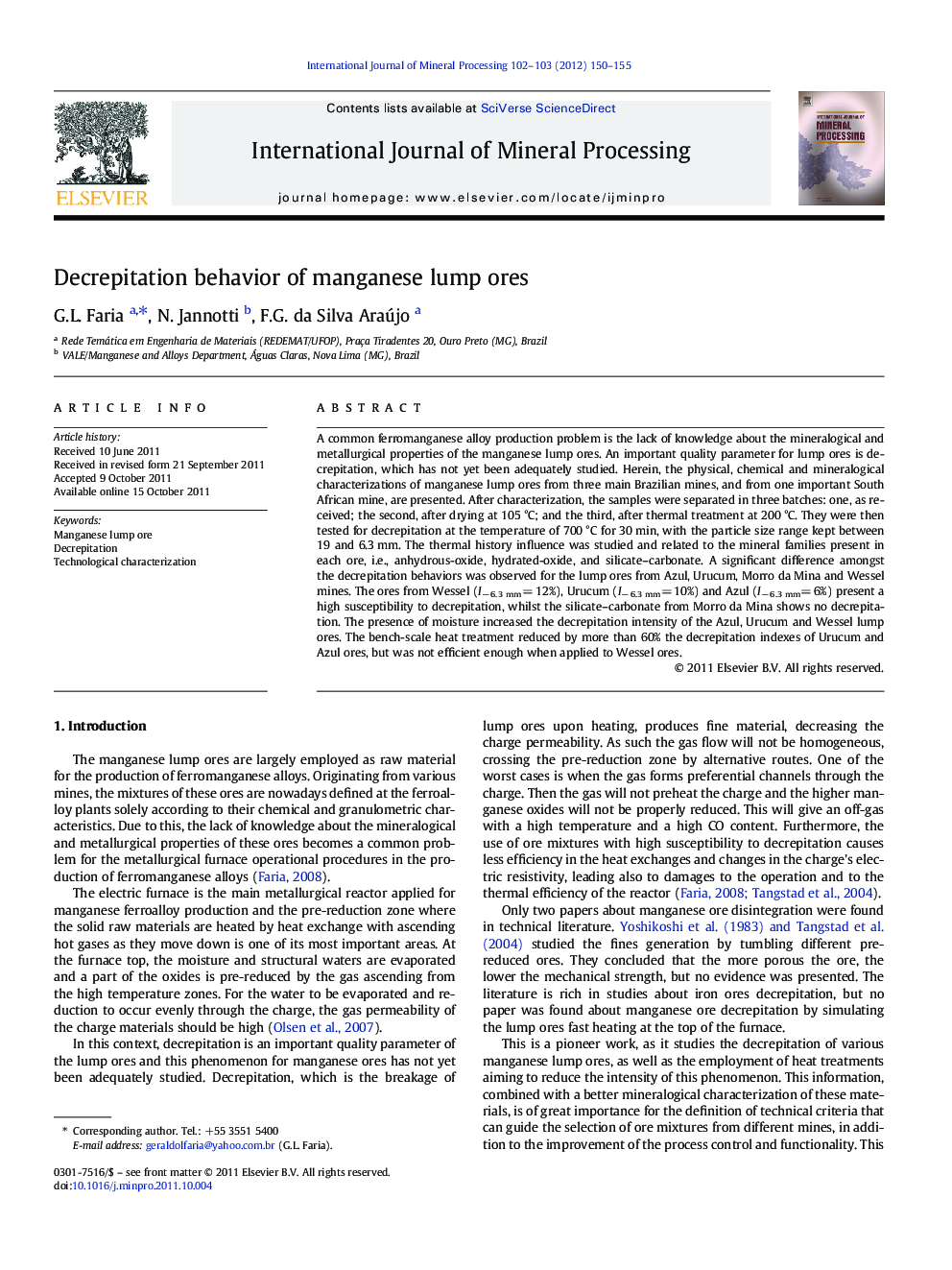| Article ID | Journal | Published Year | Pages | File Type |
|---|---|---|---|---|
| 214224 | International Journal of Mineral Processing | 2012 | 6 Pages |
A common ferromanganese alloy production problem is the lack of knowledge about the mineralogical and metallurgical properties of the manganese lump ores. An important quality parameter for lump ores is decrepitation, which has not yet been adequately studied. Herein, the physical, chemical and mineralogical characterizations of manganese lump ores from three main Brazilian mines, and from one important South African mine, are presented. After characterization, the samples were separated in three batches: one, as received; the second, after drying at 105 °C; and the third, after thermal treatment at 200 °C. They were then tested for decrepitation at the temperature of 700 °C for 30 min, with the particle size range kept between 19 and 6.3 mm. The thermal history influence was studied and related to the mineral families present in each ore, i.e., anhydrous-oxide, hydrated-oxide, and silicate–carbonate. A significant difference amongst the decrepitation behaviors was observed for the lump ores from Azul, Urucum, Morro da Mina and Wessel mines. The ores from Wessel (I− 6.3 mm = 12%), Urucum (I− 6.3 mm= 10%) and Azul (I− 6.3 mm= 6%) present a high susceptibility to decrepitation, whilst the silicate–carbonate from Morro da Mina shows no decrepitation. The presence of moisture increased the decrepitation intensity of the Azul, Urucum and Wessel lump ores. The bench-scale heat treatment reduced by more than 60% the decrepitation indexes of Urucum and Azul ores, but was not efficient enough when applied to Wessel ores.
► It is a pioneer study about the decrepitation behavior of manganese lump ores. ► The first methodology that characterizes the decrepitation of manganese ores. ► It presents a complete characterization of four important manganese ores. ► It correlates physical and mineralogical characteristics to the ore decrepitation. ► Influences of moisture and thermal treatment on the decrepitation behavior were studied.
